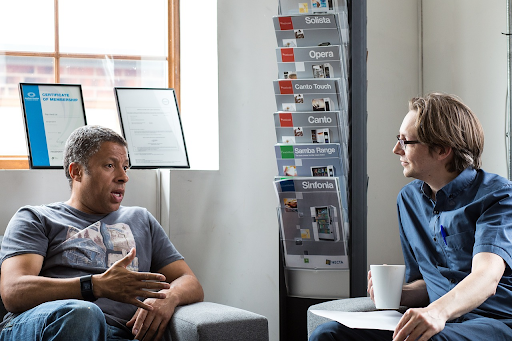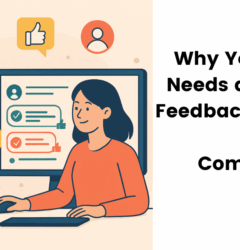Seven Effective Ways to Build Strong Client Relationships
20 Nov

Table of Contents
ToggleLet’s face it: building positive client relationships is pretty important to the survival and growth of your business. The happier the customer, the more likely they’ll trust you and stick with your business, whereas if they’re unhappy, what’s stopping them from shopping elsewhere?
In this article, we’re going to look at the most effective ways to build and maintain strong client relationships and the benefits that come with this.
The importance of building strong client relationships
Building strong client relationships takes work. It’s more than just delivering on your mission statement: it’s making them feel valued. By listening to their ideas and concerns, you allow them to become a part of the journey toward growing and developing your business.
Sure, this keeps them happy (which is obviously important), but personalized interactions and genuine care for your brand can also help your business grow and flourish. This can open the door to referrals and valuable feedback that allows you to not only improve your offerings but also adapt them according to customer needs.
Every business will have a unique relationship with its clients. However, there are some universally accepted methods to build stronger bonds and ensure they remain valued customers for years to come.
Seven effective ways to build strong client relationships
In this section, we’ve narrowed down the best ways to build fantastic client relationships into seven key points. Regardless of your industry, these methods should help you connect with your customers and ensure they remain with your business for the long run.
1. Maintain clear, open, and prompt communication

Checking in frequently with your clients might be one of the most underrated tips on this list. Scheduling meetings for project updates or time to allow them to voice any questions or concerns goes a long way toward fostering a great relationship.
It’s now far easier to keep your clients in the loop thanks to the growing number of communication tools at our disposal. From platforms like Skype, which offers super easy and swift messaging, to reliable and efficient conference call apps for arranging face-to-face business catchups, maintaining clear dialogue between you and your clients has never been easier.
You could even invest in transcription AI to make note-taking and minuting a breeze.
Don’t neglect in-person catch-ups either. Inviting a client to your office for a tour and to get to know the team (or even an informal business lunch) will always go down well.
2. Personalize interactions based on clients' requirements

There’s no universal approach when it comes to communicating with your clients.
For example, while one client may appreciate face-to-face meetings and interactions, others may prefer a simple email update or a free video call. By understanding their preferences, you demonstrate a willingness to accommodate their needs and adapt accordingly.
This not only strengthens your rapport with clients but cultivates a sense of mutual understanding and respect.
Part of this is ensuring you have a comprehensive onboarding process in place to guide your customers through your product or service. If you don’t already onboard your clients or want to give your existing onboarding a revamp, look to hire a user onboarding specialist to make sure yours will improve your client experience and build the relationships you want.
This goes back to listening to your client’s needs and wants. It’s about making their experience with your business seamless and enjoyable.
3. Proactively provide solutions to problems before issues escalate
The ability to spot potential problems or speed bumps that may hinder your client’s success is crucial to developing a strong and enduring relationship. For example, imagine there’s an audio issue during a video call with your client and this delays the meeting. If your support personnel fix this on the spot, this is known as ‘working reactively.’
This is fine—technical hiccups are common. However, your IT team should then swiftly identify what caused the problem and put a solution in place so it doesn’t happen next time. This is known as proactive project management.
Another example might be that your client hires you to manage their online profile and improve their SEO. During your research, you notice they don’t have an SSL certificate on their OnlyDomain’s website or else that it has poor site health and lacks crucial security features.
In this scenario, you might conduct a site audit to identify its weak points and improve these along with the website’s SEO to alleviate the risk of a bad user experience or hacking attempts.
From your client’s point of view, they’re witnessing you demonstrate great project management and identify problems before they’ve mentioned them or even realized they had them. This proactive approach shows genuine care and concern for their business and will always be received well.
4. Offer value beyond basic service and share insights with clients

Going the extra mile to support your clients is also extremely important to maintain their trust, especially as time goes on.
You might be put in a position where the client requires a customized solution or something you may not provide as a standard service. Obliging them, even if it requires a little more effort, is often worth it.
For example, say your client wants to expand their business into the area code 956 location and asks you to help with this. While it may not be a service you normally offer, you could do a little research and identify how to make this easier for them.
By going out of your way to provide a solution for your client’s needs, you strengthen the personal relationship between you. Also, they definitely won’t forget this sort of favor in a hurry.
Sharing insights is also extremely important as most clients don’t know how their campaigns are doing behind the scenes. Sure, monthly reporting and catch-ups typically cover this, but if there’s an opportunity to see them covered in the local press or to obtain a great backlink from a respectable website and you bring this to their attention, it shows your dedication to their brand and success.
5. Consistently deliver high-quality products or services on time
This one should come as no surprise. Consistency is key in pretty much any client-business context, but ensuring work is delivered on time and to a high quality is essential.
Building on this, you should always aim to exceed expectations if possible. Something as simple as submitting work a few days early can help build a stronger relationship with them.
Make sure you set realistic expectations from the start too. Don’t promise what you can’t deliver, as this will not only add stress to your workload but the deliverable may end up rushed and therefore lacking in quality.
Even in the event that work is delayed or not submitted on time, being open and transparent about the reasons why is better than making an excuse. Clients will appreciate you coming forward and admitting to an error of judgment.
5. Schedule check-ins to identify needs, goals, and feedback

Having regularly scheduled catch-ups or debriefs using remote support tools keeps everyone in the know regarding what’s going on with the campaign.
Whether it’s arranging a quarterly review to run through analytics performance or simply offering them a platform to ask questions, regular communication touchpoints keep everyone on the same page.
Scheduled check-ins also give you the opportunity to ask for client feedback. You might think you’re doing a great job from an analytical point of view, but your client may desire some more one-on-one time to understand the campaign in greater depth or to run a few of their own ideas by you.
Listen to their feedback and act on it. Doing this not only shows that you’re willing to adapt and accommodate their needs but that you value their opinion. Again, this comes back to allowing the client to feel heard.
7. Express gratitude to clients on a regular basis
The little things go a long way. In any business, a working relationship goes in both directions. Happy clients should acknowledge your support and partnership and vice versa. Remember, investing in new customers and clients is between five and 25 times more expensive than retaining existing ones, so you want to hold onto the ones you’ve got.
There are several ways you can express gratitude, ranging from personalized thank-you notes to sending them a gift card or inviting them for lunch or dinner at a nearby restaurant. Showing genuine appreciation humanizes you and shows you’re not just a business—you’re people who are empathetic toward your clients and care about the growth and future of their company.
Conclusion

Building positive client relationships takes time, but being honest and transparent about your mission statement from the beginning is a good place to start. Finding a balance between professionalism and friendship is key here.
Yes, your client has likely hired you based on your expertise and what you can do for their business. However, positive client relationships are built on genuine empathy and connection, not just transactions.
Keep it human, and keep the connection friendly and open. Something as simple as congratulating them on a promotion or asking how their holiday went can go a long way toward creating a long-lasting relationship.
Recent Posts
- Best Practices for Efficient Document Reviews and Collaboration December 18, 2025
- MEP Document Management: How to Streamline Reviews & Avoid Rework October 3, 2025
- What Is Online Proofing Software? And Why Content Review Breaks Without It July 11, 2025
- How Laerdal Medical Cut eLearning Review Time by 50% with zipBoard’s Visual Review Tool July 9, 2025
- Why Your Team Needs a Content Feedback System (Not Just Comments in Docs) May 28, 2025
©️ Copyright 2025 zipBoard Tech. All rights reserved.


